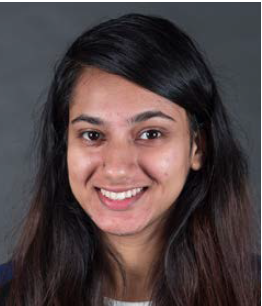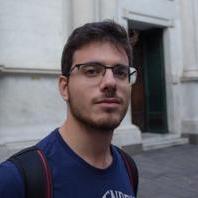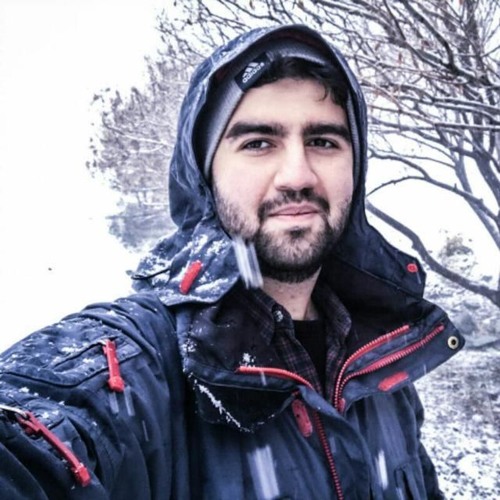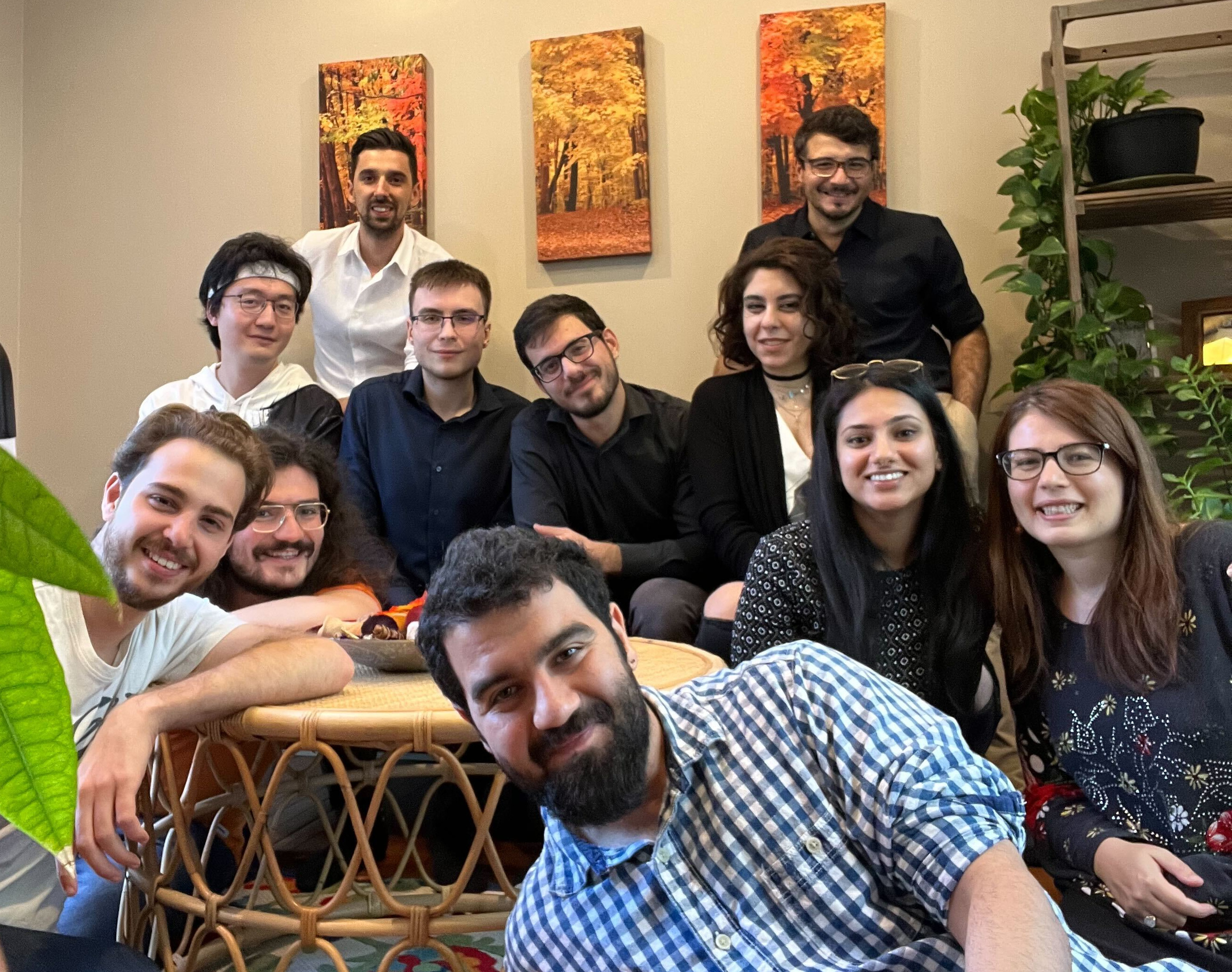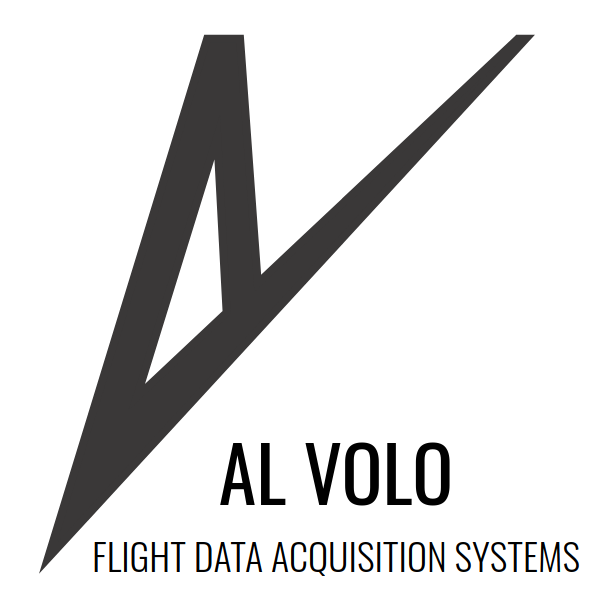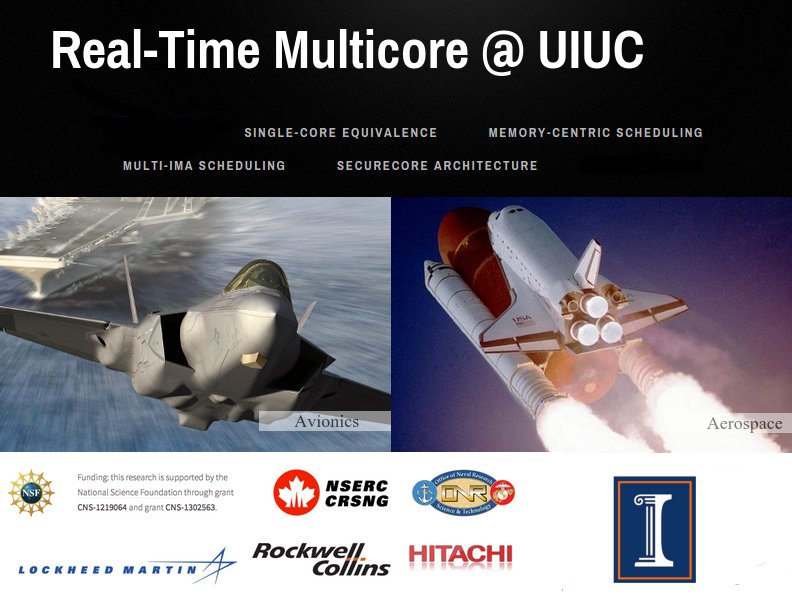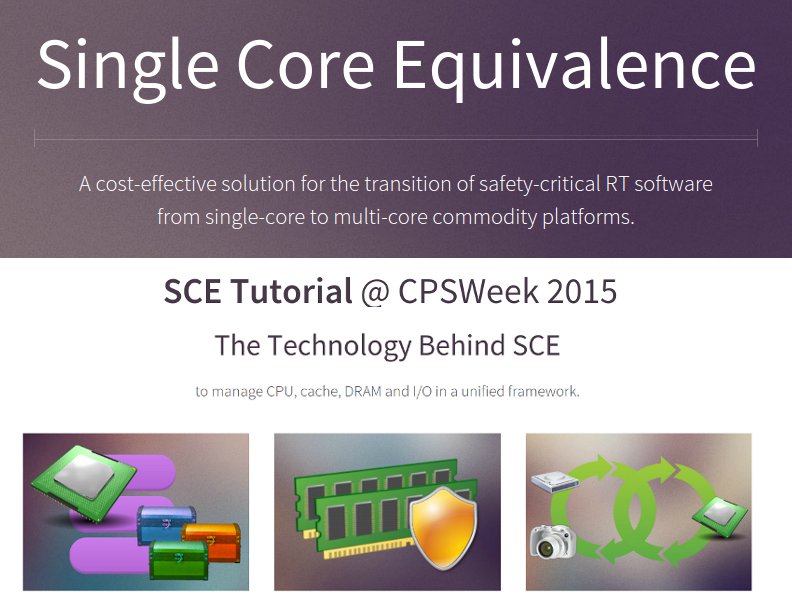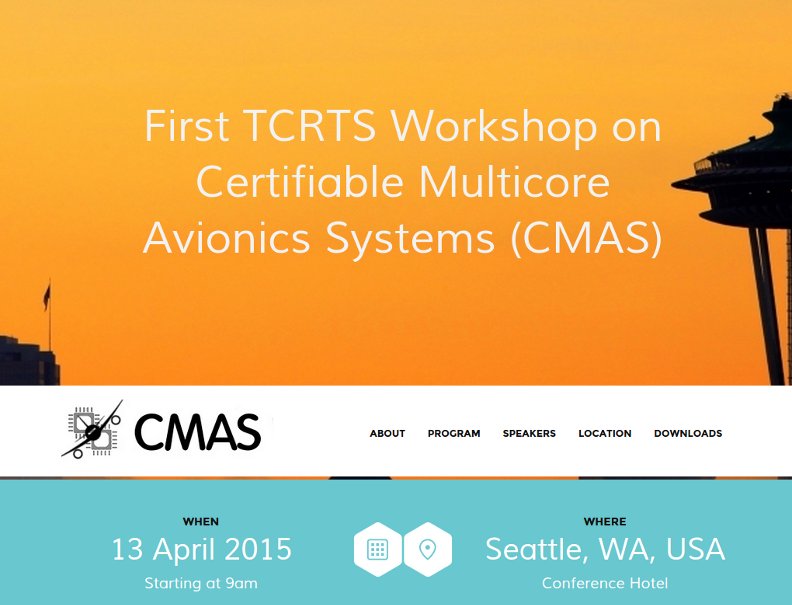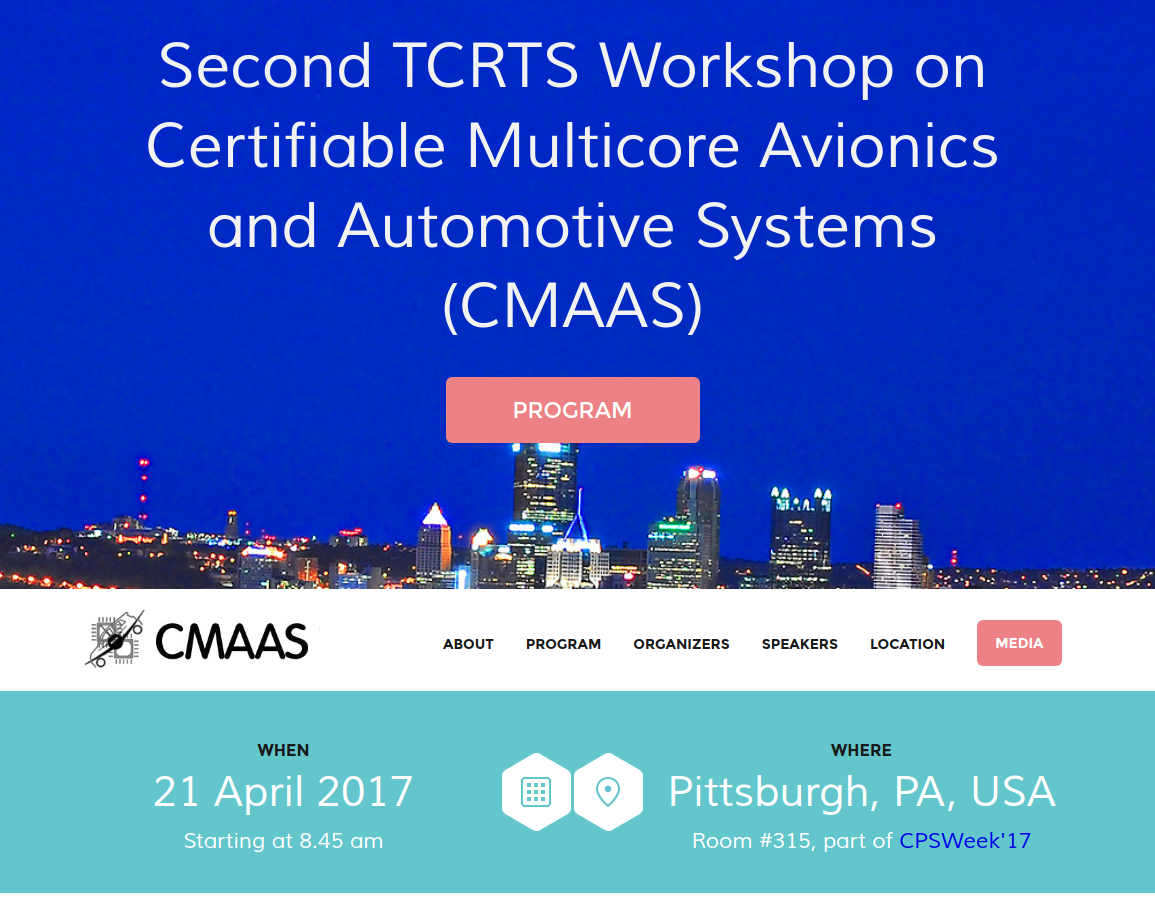Briefly
I am an associate professor in the department of Computer Science at Boston University (BU) and the director of the BU Cyber-Physical Systems Lab (CPSLab@BU). I am also affiliated with the BU Dept. of Electrical and Computer Engineering. I received my Ph.D. from the University of Illinois at Urbana-Champaign (UIUC) in 2017. My research focuses on real-time and embedded systems. I am especially interested in partially-reconfigurable platforms and OS-level multi-core resource management technologies for high-performance, safety-critical systems. I am also interested in applications and methodologies to design, deploy and analyze Cyber-Physical Systems (CPS), and in real-time cloud computing. My research also touches on aspects of security for embedded systems and technologies for UAVs.
I am currently looking for motivated master and Ph.D. students who would like to work with me. If you are one those, please contact me!
Renato MancusoAssociate Professor

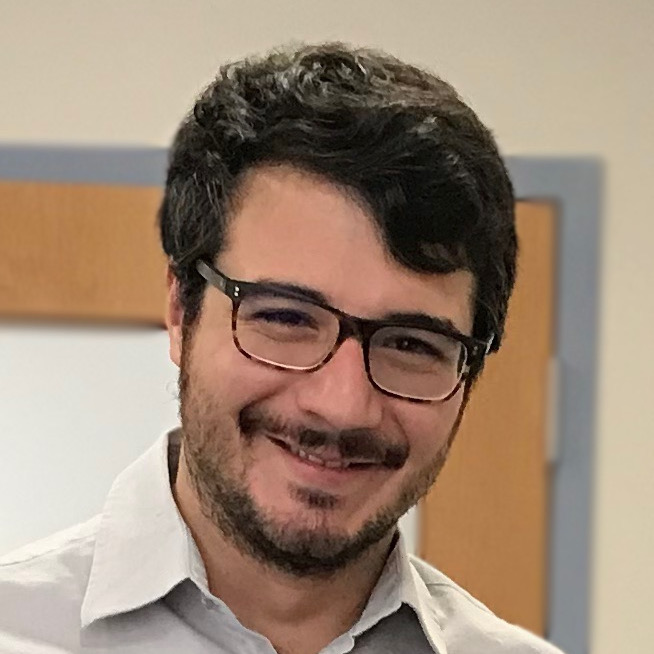

Contact me
- Office:
- CCDS 740 (7th floor)
- Phone:
- +1 (617) 358-8537
- Email:
- rmancuso@bu.edu
- Address:
- 665 Commonwealth Ave, Boston MA 02215
Updates and News

-
I was invited to visit the CRIStAL research center in Lille, France by Prof. Lipari where I delievered the talk titled "Turning Timeliness into a Controllable Dimension."
-
Bassel El Mabsout defended his Ph.D. thesis "Minimizing the Intent-to-Reality Gap in Robot Learning: A Fulfillment-Centric Perspective" Commitee: Kate Saenko (BU), Sabrina Neuman (BU), Bingzhuo Zhong (HKUST-GZ). Deepest congratulations for this important career milestone!
-
Our paper titled "Micro-architectural Exploration of the Relational Memory Engine in RISC-V and FireSim" is accepted to appear at the ADMS'25 workshop. This is joint work with Prof. Athanassoulis (BU) and Prof. Yun (KU). Read the PDF here .
-
Our Ignition Award application titled "Burning Fetch Execution: A Framework for Zero-Trust Multi-Party Confidential Computing" has been selected for funding.
-
It's official! I have joined the Scientific Advisory Board of the Neobotics Foundation led by my former student Koneshka Bandyopadhyay, a non-profit organization poised to revolutionize autonomous vehicle education.
-
I am invited to serve as co-chair for the Education Classes (EC) session at ESWEEK'25 .
-
Rolling out the new CS-391 "Computer & Memory Architectures" course at BU. This is also the first undergraduate-level architecture course designed to become a regular addition to the CS curriculum.
-
Our paper titled "Flight Testing Instrumentation Development and Integration for a Subscale Integrated High Lift Propulsor Testbed" has been accepted to appear at the AIAA SciTech 2025 Forum . Read the PDF here .
-
Our paper "Coherence-Aided Memory Bandwidth Regulation" received the Best Paper Award at IEEE RTSS'24 . Read the PDF here.
-
Our Red Hat Collaboratory project titled "Foundations of Hypervisorless Virtualization Technology in High-performance Systems" was selected to be funded. We are very thankful for the support!
-
Shahin Roozkhosh successfully defended his Ph.D. thesis titled "AlterWare: When Hardware Becomes Soft." Commitee members: Rich West (BU), Jonathan Appavoo (BU), Heechul Yun (KU). Deepest congratulations for this important career milestone!
-
Our project titled "Burning Fetch Execution: A Framework for Zero-Trust Multi-Party Confidential Computing" received the best demo presentation award for Challenge 6 "Zero-Trust Platform, System, and Communication Architecture [...]" at the TII Genzero workshop.
-
We are presenting the first demo of our take on confidential computing at the TII Genzero workshop with the project titled "Burning Fetch Execution: A Framework for Zero-Trust Multi-Party Confidential Computing".
-
The technical program of RTNS'24 that I am co-chairing is officially online! This year, the conference will be a 3-days event.
-
I am invited to serve as the Local Arrangements Chair for IEEE RTSS'25 which will be hosted at Boston University.
-
Our paper titled "Burning Fetch Execution: A Framework for Zero-Trust Multi-Party Confidential Computing" has been selected for presentation at the GENZERO 2024 Workshop.
-
It's official! The BU F1Tenth Autonomous Racing Organization (ACRO) is born. BU ACRO is a student-led club revolving around the definition of competition-grade autonomous racing software/hardware stack. I am delighted to serve as the PI of BU ACRO.
-
I am a co-organizer for the "Learning to Trust Autonomy Workshop" (see details here). The event will also host a F1Tenth autonomous racing competition.
-
Our paper "Coherence-Aided Memory Bandwidth Regulation" has been accepted to appear at IEEE RTSS'24 . Read the PDF here.
-
Our project "Effortless Data Locality Through Near-memory On-the-fly Data Transformation" is awarded funding from the National Science Foundation (NSF). See abstract here . Thanks for the support! This is a collaborative project with Manos Athanassoulis (BU) and Heechul Yun (KU).
-
I am invited to serve as the artifact evaluation committee chair of DSN 2025. .
-
I am invited to serve as the program committee chair of ECRTS 2025. which will be hosted in Brussels, Belgium.
-
Our paper "Unified Local-Cloud Decision-Making via Residual Reinforcement Learning" has been accepted to appear at ECCV 2024. Read the PDF here .
-
Our paper "The Omnivisor: A real-time static partitioning hypervisor extension for heterogeneous core virtualization over MPSoCs" has cleared artifact evaluation and a demo of the work will be presented at ECRTS 2024. Read the PDF here, and find the code here.
-
Our paper "MCTI: Mixed-Criticality Task-based Isolation" has been accepted for publication in the Real-Time Systems Journal. Read the PDF here.
-
I was awarded the 2024 ACM SIGBED Early Career Researcher Award which is conferred to one junior researcher per year for outstanding contribution in the area of embedded, real-time, and cyber-physical systems.
-
Our paper "MemPol: Polling-Based Microsecond-Scale Per-Core Memory Bandwidth Regulation" has been accepted for publication in the Real-Time Systems Journal. Read the PDF here.
-
I am promoted to the rank of Associate Professor with tenure in the Computer Science Department at Boston University.
-
Shahin Roozkhosh, a Ph.D. student in my CPSLab@BU, successfully cleared his Ph.D. Thesis Proposal.
-
Our paper "The Omnivisor: A real-time static partitioning hypervisor extension for heterogeneous core virtualization over MPSoCs" has been accepted to appear at ECRTS 2024. Read the PDF here .
-
Shahin Roozkhosh, a Ph.D. student in my CPSLab@BU, was awarded the BU Computer Science Research Excellence Award. Congratulations!
-
Our paper "Shared Resource Contention in Low-end MCUs: A Reality Check and the Quest for Timeliness" has been accepted to appear at ECRTS 2024. Read the PDF here .
-
Denis Hoornaert (TUM) visited our Cyber-Physical Systems Lab and delivered the first talk about our collaborative work titled "On-the-fly Reorganization of High-Order Data Objects to Achieve Effortless Locality" at the BU Systems Seminar.
-
We have concluded the first round of reviews for ACM RTNS'24 which this year I am chairing together with Patrick Meumeu Yomsi (CISTER). Two more rounds to go!
-
I am invited to serve on the Technical Program Commitee of IEEE RTSS'24 .
-
I am invited to serve on the program committee of ACM SIGBED EMSOFT'24 .
-
I am invited to serve on the program committee of the Real-time And intelliGent Edge computing workshop (RAGE 2024 )
-
I am invited to serve on the program committee of ECRTS 2024.
-
Bosch GmbH made a donation to our group for research on compartmentalization of safety-critical subsystems in heterogeneous platforms. Thanks for the support!
-
The research conducted in my lab was reviewed in the article titled "Faster, Safer, Smarter" that appeared in the BU Arts & Sciences Magazine. Read it online here.
-
Our Red Hat Collaboratory project titled "Minimal Mobile Systems via Cloud-based Adaptive Task Processing" receives funding. We are very thankful for the support!
-
I am invited to serve as Chair for ACM RTNS'24 .
-
I am delivering a research talk at Washington University in St. Louis.
-
I have joined the BU UR2PhD initiative with the project "Lightspeed!"
-
I am delivering a research talk at the CISTER Institute in Porto, Portugal.
-
Our demo "On-the-fly Data Transformation in Action" received the Best Demonstration Award at VLDB 2023.
-
I am invited to serve on the program committee of RTAS'24 .
-
I am delivering a research talk at the Bosch GmbH Research Campus in Stuttgart, Germany.
-
Our paper "Low-overhead Online Assessment of Timely Progress as a System Commodity" received the Best Presentation Award at ECRTS 2023. Read the PDF here .
-
Our paper "Memory Latency Distribution-Driven Regulation for Temporal Isolation in MPSoCs" received the Outstanding Paper Award at ECRTS 2023. Read the PDF here .
-
Our paper "Low-overhead Online Assessment of Timely Progress as a System Commodity" received the Outstanding Paper Award at ECRTS 2023. Read the PDF here .
-
I am invited to join the editorial board of the Leibniz Transactions on Embedded Systems (LITES) as an Associate Editor. Learn more about the journal and submit your best work here: LITES.
-
I was featured the article titled "BU’s 5 NSF Grant Winners Are Changing Conversations in Robotics, Computing, [...]" that appeared in The Brink. It provides a high-level description of my NSF CAREER research and education plan. Read it online here.
-
I was featured the article titled "Three Hariri Institute Faculty Affiliates Receive NSF CAREER Awards". Read it online here.
-
Bassel El Mabsout, a Ph.D. student in my CPSLab@BU, successfully defended his M.Sc. thesis with the title "PULER." Congratulations!
-
Our paper "Low-overhead Online Assessment of Timely Progress as a System Commodity" has been accepted to appear at ECRTS 2023. Read the PDF here .
-
Our paper "Memory Latency Distribution-Driven Regulation for Temporal Isolation in MPSoCs" has been accepted to appear at ECRTS 2023. Read the PDF here .
-
I was nominated for the BU Supervisor of the Year Award by 5 of my Ph.D. students. I am truly honored for their support!
-
I was awarded the 2023 Gerald and Deanne Gitner Family Award for Innovation in Teaching with Technology. Read more about the 2023 Gitner Teaching Award.
-
It's official! I was awarded the NSF CAREER Award with the proposal titled "Timeliness as a Controllable Dimension via Knowledge-driven System Management."
-
Our paper "Unikernel Linux (UKL)" has been accepted to appear at EuroSys 2023. Read the PDF here .
-
Our paper "Lazy Load Scheduling for Mixed-Criticality Applications in Heterogeneous MPSoCs" has been accepted to appear in ACM Transactions on Embedded Computing Systems (TECS). Read the PDF here .
-
Our paper "Relational Fabric: Transparent Data Transformation" has been accepted to appear at IEEE ICDE'23. Read the PDF here .
-
I am attending and delivering a talk at the 2nd High-Performance Real-Time Workshop organized by ARM .
-
Our Red Hat Collaboratory project titled "Toward on-the-Fly Reorganization of High-Order Data Objects" receives funding. We are very thankful for the support!
-
Our Red Hat Collaboratory project titled "Relational Memory Controller" receives funding. We are very thankful for the support!
-
Our Red Hat Collaboratory project titled "Minimal Mobile Systems via Cloud-Based Adaptive Task Processing" receives funding. We are very thankful for the support!
-
I am invited to serve as Track 1 Deputy Chair for IEEE RTSS'23 .
-
I will be delivering an invited talk at the Real-time And intelliGent Edge computing workshop (RAGE 2023) on May 9, 2023.
-
Our paper "MemPol: Policing Core Memory Bandwidth from Outside of the Cores" has been accepted to appear at IEEE RTAS'23. Read the PDF here .
-
The webpage for OSPERT 2023, co-chaired by Alex Zuepke and me, is officially online! The workshop will be co-located with ECRTS 2023.
-
I received the Best Reviewer Award at IEEE RTSS'22 .
-
I am elevated to the grade of IEEE Senior member.
-
Bosch GmbH made a donation to our group for research on profile-driven system management in real-time cloud backend systems. Thanks for the support!
-
I am invited to serve on the program committee of ECRTS 2023.
-
I am delivering the talk "Can We Control Time? Toward Knowledge-driven System Management to Control Timeliness." as part of Red Hat Research Days initiative on October 19, 2022. The recording is now available.
-
Our paper "CAESAR: Coherence-Aided Elective and Seamless Alternative Routing via on-chip FPGA" has been accepted to appear at IEEE RTSS'22 . Read the PDF here.
-
Our demo paper "Hardware Data Re-organization Engine for Real-Time Systems" has been accepted to appear at RTSS@Work'22. Read the PDF here.
-
Our demo paper "Know your Enemy: Benchmarking and Experimenting with Insight as a Goal" has been accepted to appear at RTSS@Work'22. Read the PDF here.
-
I am invited to serve on the program committee of RTNS'23 .
-
I am invited to serve on the program committee of WMC'22 .
-
I am invited to serve as Track 1 Deputy Chair for IEEE RTAS'23 .
-
I am invited to serve on the program committee of DATE'23 for topic E2 "Real-time, Dependable and Privacy-enhanced Systems."
-
Our paper "Relational Memory: Native In-Memory Accesses on Rows and Columns" has been accepted for publication at Extending Database Technology (EDBT'22). Read the PDF here.
-
I will be giving a research talk at the Chair of Cyber-Physical Systems in Production Engineering, Technical University of Munich in Germany.
-
I will be giving a research talk at the Centro ALGORITMI, University of Minho in Portugal.
-
I am delivering the keynote "From Partitioning to Management: through Fine-grained Profiling and Control" at the 2022 CAPITAL Workshop in Grenoble, France.
-
Francesco Ciraolo joined my research group as a Ph.D. student. Welcome on board!
-
Our paper "RT-Bench: an Extensible Benchmark Framework for the Analysis and Management of Real-Time Applications" has been accepted for publication at Real-Time Networks and Systems (RTNS'22). Read the PDF here.
-
Our paper "A Closer Look at Intel Resource Director Technology (RDT)" has been accepted for publication at Real-Time Networks and Systems (RTNS'22). Read the PDF here.
-
I am invited to serve on the program committee of IEEE RTSS'22 .
-
I am delivering a research talk with the title "From Partitioning to Management: Fine-grained Resource Profiling and Knowledge-driven Allocation" at the University of Californa, Berkeley as part of the DREAMS Seminar series.
-
Our paper "Profile-driven Memory Bandwidth Management for Accelerators and CPUs in QoS-enabled Platforms" has been accepted for publication in the Real-Time Systems Journal. Read the PDF here.
-
I am delivering a talk with the title
"Modern Cyber-Physical Systems and the Nightmare of Temporal Interference" at the student chapter of the BU Upsilon Pi Epsilon. -
I am delivering a research talk with the title
"From Partitioning to Management: Tackling Memory Contention with Fine-grained Profiling and Control" as part of the BU Systems Seminar series. -
Our Red Hat Collaboratory project titled "Near-Data Data Transformation" receives funding. Check out the project webpage here. Thanks for the support!
-
Bosch GmbH made a donation to our group for research on performance isolation in multi-core automotive systems. Thanks for the support!
-
I will be organizing the 16th annual workshop on Operating Systems Platforms for Embedded Real-Time (OSPERT'22). Stay tuned for the official Call for Papers. .
-
The post I co-authored titled "Knowledge is Power. The Case for Profile-driven Resource Management in Complex Systems" is published on the ACM SIGBED blog. Read the post here .
-
Our paper "A Real-Time virtio-based Framework for Predictable VM-Communication" has been accepted to appear at IEEE RTSS'21 . Read the PDF here.
-
I am invited to serve on the program committee of ECRTS 2022.
-
I am invited to serve on the program committee of DAC'22 for the AS1 Autonomous Systems (Automotive, Robotics, Drones) track.
-
The preprint of our work on Relational Memory, i.e. FPGA-aided on-the-fly data reorganization is now online! Check out the arXiv paper here: Relational Memory Preprint
-
Our group received funding from Cisco Research to investigate PLIM-enabled software-hardware co-design of data systems. This is joint work with Prof. Athanassoulis.
-
I am invited to serve on the program committee of IEEE/ACM ICCPS'22.
-
Our paper "An analyzable inter-core communication framework for high-performance multicore embedded systems" is accepted for publication in Elsevier Journal of Systems Architecture (Elsevier JSA) . Read the PDF here.
-
Our paper "How to Train your Quadrotor: A Framework for Consistently Smooth and Responsive Flight Control via Reinforcement Learning" has been accepted to appear in ACM Transactions on Cyber-Physical Systems. Read the PDF here .
-
I am invited to serve as artifact evaluation chair for IEEE RTAS'22 .
-
Our paper "A Memory Scheduling Infrastructure for Multi-core Systems with Re-programmable Logic" has been accepted to appear at ECRTS 2021. Read the PDF here .
-
Our paper "Governing with Insights: Towards Profile-driven Cache Management of Black-Box Applications" has been accepted to appear in ECRTS 2021. Read the PDF here .
-
I am invited to serve on the program committee of IEEE CoG 2021.
-
I am invited to join the committee for this year's ACM Student Research Competition (SRC ) Grand Finals.
-
Dharmesh Tarapore joined my research group as a Ph.D. student. Welcome on board!
-
Weifan Chen joined my research group as a Ph.D. student. Welcome on board!
-
I am delivering a research talk with the title "From Partitioning to Management: Tackling Memory Contention with Fine-grained Profiling and Control" at the Washington University in St. Louis.
-
Our paper "Identifying Unexpected Inter-core Interference Induced by Shared Cache" accepted to appear at the WiP Session at the IEEE Real-Time and Embedded Technology and Applications Symposium IEEE RTAS'21 . Read the PDF here.
-
Mattia Nicolella joined my research group as a Ph.D. student. Welcome on board!
-
Our paper "Regularizing Action Policies for Smooth Control with Reinforcement Learning" has been accepted to appear at the IEEE International Conference on Robotics and Automation IEEE ICRA'21 . Read the PDF here.
-
I am officially affiliated with the BU Department of Electrical and Computer Engineering (ECE).
-
The post I authored titled "Cyber-Physical Systems embody the battle between Self-Awareness and Context-Awareness" is published on the ACM SIGBED blog. Read the post here .
-
I am invited to serve on the program committee of ECRTS 2021.
-
I am invited to serve on the program committee of ACM SIGBED EMSOFT'21 .
-
Our paper "E-WarP: a System-wide Framework for Memory Bandwidth Profiling and Management" received the Best Student Paper Award at IEEE RTSS'20 . Read the PDF here.
-
Bosch GmbH made a donation to our group for research on performance isolation in multi-core automotive systems. Thanks for the support!
-
I am invited to serve as publicity chair for IEEE RTSS'21 .
-
Our paper "E-WarP: a System-wide Framework for Memory Bandwidth Profiling and Management" was selected as an outstanding paper at IEEE RTSS'20 . Read the PDF here.
-
An article titled "We Have Emphasized Learning and Compassion" appears in the Communications of the ACM and discusses some of my remote teaching phylosophy and approach. Read it online here.
-
I am invited to serve as a judge for the BostonHacks competition.
-
I am invited to serve on the program committee of DAC'21 for the AS1 Autonomous Systems (Automotive, Robotics, Drones) track.
-
Our paper "E-WarP: a System-wide Framework for Memory Bandwidth Profiling and Management" has been accepted to appear at IEEE RTSS'20 . Read the PDF here.
-
Our project "Beyond Accelerators - Using FPGAs to Achieve Fine-grained Control of Data-flows in Embedded SoCs" is awarded funding from the National Science Foundation (NSF). See abstract here . Thanks for the support!
-
I am invited to serve as web chair for ICCPS'21 .
-
I am invited to deliver a keynote speech at the X Brazilian Symposium on Computing Systems Engineering SBESC'20 .
-
I am invited to serve as publicity chair for IEEE RTAS'21 .
-
I am invited to serve on the program committee of ICPADS'20 in the Architecture Track.
-
I am invited to serve on the program committee of DATE'21 for topic E2 "Real-time, dependable and privacy-enhanced systems."
-
Our U.S. Patent No. 10649914 "Scratchpad-Based Operating System for Multi-Core Embedded Systems" is officially issued as of May 12, 2020.
-
I am invited to serve on the program committee of IEEE RTSS'20 .
-
Our paper "The Potential of Programmable Logic in the Middle: Cache Bleaching" has been awarded the best paper award at IEEE RTAS'20. Read the PDF here . The video presentation is available here .
-
I am invited to join the committee for this year's ACM Student Research Competition ( SRC ) Grand Finals.
-
After weeks of preparation with the editors Heechul Yun & Sophie Quinton, the ACM SIGBED Blog is now live!
-
Three projects from my group being presented at the BU Cloud Computing Workshop with IBM and Red Hat. Check out the agenda of the workshop here.
-
Our paper "The Potential of Programmable Logic in the Middle: Cache Bleaching" has been accepted to appear at IEEE RTAS'20. Read the PDF here .
-
I am invited to serve on the program committee of ACM SIGBED EMSOFT'20 .
-
I am organizing the new ACM SIGBED Student Scholars Program. It is open to undergraduate students, giving them the chance to attend CPSWeek 2020 in Sydney at no cost.
-
Red Hat made a donation to our group for research on near-memory processing in enterprise systems. Thanks for the support!
-
Bosch GmbH made a donation to our group for research on performance isolation in multi-core automotive systems. Thanks for the support!
-
I will be organizing the 16th annual workshop on Operating Systems Platforms for Embedded Real-Time (OSPERT). Check out the CfP here: OSPERT 2020 .
-
I am attending and delivering a talk at the 1st High-Performance Real-Time Workshop organized by ARM .
-
I am invited to serve on the program committee of RTAS'20 .
-
I am invited to deliver a talk at WPI as part of the CS colloquium series.
-
I am invited to serve on the program committee of DATE'20 .
-
I am invited to serve on the program committee of DAC'20 .
-
I am joining the Executive Committee of ACM SIGBED as Communication Director .
-
I am invited to serve on the program committee of the 7th International Workshop on Mixed Criticality System WMC'19 .
-
I will be organizing the first edition of the Student Research Competition (SRC) at ESWEEK this year in New York. The event is supported by ACM and MS Research.
-
Our paper "Designing Mixed Criticality Applications onModern Heterogeneous MPSoC Platforms" received the Outstanding Paper Award at ECRTS 2019. Read the PDF here .
-
I am invited to serve on the program committee of IEEE RTSS'19 .
-
Our paper "Designing Mixed Criticality Applications onModern Heterogeneous MPSoC Platforms" has been accepted to appear at ECRTS 2019. Read the PDF here .
-
Our paper "A Real-Time Scratchpad-centric OS with Predictable Inter/Intra-Core Communication for Multi-core Embedded Systems" has been accepted to appear in Real-Time Systems Journal Read the PDF here .
-
Our paper "Impact of DM-LRU on WCET: a Static Analysis Approach" has been accepted to appear at ECRTS 2019. Read the PDF here .
-
Our paper "Unikernels: The Next Stage of Linux's Dominance" has been accepted to appear at HotOS 2019. Read the PDF here .
-
Our project with Prof. Xi Ling (CHEM) on "Data Driven, Inexpensive and Reusable Sensors for Water Contamination Detection" was the recipient for the Hariri Institute Research Incubation Award. Truly grateful for the support!
-
I am invited to serve on the program committee of IEEE RTCSA'19 .
-
I am invited to serve on the program committee of NENS'19 .
-
The preprint for our new work "Neuroflight: Next Generation Flight Control Firmware" is now available on arXiv. Read the PDF here.
-
Rolling out the new CS-454/654 "Embedded Systems Development" course at BU. This is also the first lab-based course in the CS department. More details here: CS-454/654 Webpage.
-
Our paper "Deterministic Memory Hierarchy and Virtualization for Modern Multi-Core Embedded Systems" has been accepted to appear at IEEE RTAS'19. Read the PDF here .
-
Our paper "Reinforcement Learning for UAV Attitude Control" has been accepted to appear in ACM Transactions on Cyber-Physical Systems. Read the PDF here .
-
I am invited to serve on the program committee of ACM SIGBED EMSOFT'19 .
-
I am invited to serve on the program committee of IEEE ICSCC'19 .
-
Honored to be an invited speaker at the Technical Fair of Manaus Digital Hub. More info available here .
-
Technology transition talk at BU about long-term adoption of multi-core solutions for Industry 4.0.
-
Xilinx offers to donate two UltraScale+ MPSoC development kits. Truly grateful for their support.
-
Shahin Roozkhosh joined my research group as a Ph.D. student. Welcome on board!
-
I am invited to serve on the program committee of IEEE RTAS'19 .
-
Our paper "Analysis of Dynamic Memory Bandwidth Regulation in Multi-core Real-Time Systems" has been accepted to appear at IEEE RTSS'18 . Read the PDF here.
-
I am invited to serve on the program committee of the brief presentation session at IEEE RTSS'18 .
-
I am invited to serve as web chair for IEEE RTAS'19 .
-
I am invited to serve on the award selection committee at IEEE RTCSA'18 .
-
I am invited to serve on the program committee of the demo session "RTSS@Work" at IEEE RTSS'18 .
-
I am invited to serve on the program committee of the "Workshop on Mixed-Criticality" (WMC) at IEEE RTSS'18 .
-
Our paper "Evaluating Memory Subsystem of Configurable Heterogeneous MPSoC" has been accepted to appear at OSPERT'18 .
-
Our paper "Verification of OS-level Cache Management" has been accepted to appear at OSPERT'18 .
-
Honored to be an invited speaker at the "Workshop on Modelling, Measuring and Managing Uncertainty in CPS" at the University of York, UK.
-
Our paper "Deterministic Memory Abstraction and Supporting Multicore System Architecture" has been accepted to appear at ECRTS'18 .
-
I am invited to serve on the program committee of the "Mixed-Criticality System Design, Implementation and Analysis" Special Session at Euromicro DSD'18 .
-
I am invited to serve on the program committee of IEEE RTSS'18 .
-
I am invited to serve on the program committee of at IEEE RTCSA'18 .
-
I am invited to serve on the program committee of EMSOFT'18 .
-
I am invited to serve on the program committee of the WiP session at RTEST'18 .
-
I am invited to serve on the program committee of the "Operating Systems Platforms for Embedded Real-Time applications" (OSPERT) workshop at ECRTS'18 .
-
I am a co-organizer of the "Second TCRTS Workshop on Certifiable Multicore Avionics and Automotive Systems (CMAAS)". Slides and recordings from the workshop now available here .
-
Accepted offer to join the Department of Computer Science at Boston University (BU) as an Assistant Professor starting from Fall 2017.
-
Successfully defended my Ph.D. thesis. The PDF is now available here .
Selected Publications

Observing the Invisible: Live Cache Inspection for High-Performance Embedded Systems
Tarapore, Dharmesh and Roozkhosh, Shahin and Brzozowski, Steven and Mancuso, Renato
In IEEE Transactions on Computers. [PDF]
Reinforcement Learning for UAV Attitude Control
Koch, William and Mancuso, Renato and West, Richard and Bestavros, Azer
In ACM Transactions on Cyber-Physical Systems. [PDF]
Real-Time Computing on Multicore Processors
Sha, Lui and Caccamo, Marco and Mancuso, Renato and Kim, Jung-Eun and Yoon, Man-Ki and Pellizzoni, Rodolfo and Yun, Heechul and Kegley, Russel B. and Perlman, Dennis R. and Arundale, Greg and Bradford, Richard
In IEEE Computer. [PDF]
Coherence-Aided Memory Bandwidth Regulation
Izhbirdeev, Ivan and Hoornaert, Denis and Chen, Weifan and Zuepke, Alexander and Hammad, Youssef and Caccamo, Marco and Mancuso, Renato
In Proceedings of the 45th IEEE Real-Time Systems Symposium (RTSS 2024), York, UK. (Best Paper Award) [PDF]
Low-overhead Online Assessment of Timely Progress as a System Commodity
Chen, Weifan and Izhbirdeev, Ivan and Hoornaert, Denis and Roozkhosh, Shahin and Carpanedo, Patrick and Sharma, Sanskriti and Mancuso, Renato
In Proceedings of the 35th Euromicro Conference on Real-Time Systems (ECRTS 2023), Vienna, Austria. (Outstanding Paper Award, Best Presentation Award) [PDF]
Memory Latency Distribution-Driven Regulation for Temporal Isolation in MPSoCs
Saeed, Ahsan and Hoornaert, Denis and Dasari, Dakshina and Ziegenbein, Dirk and Mueller-Gritschneder, Daniel and Schlichtmann, Ulf and Gerstlauer, Andreas and Mancuso, Renato
In Proceedings of the 35th Euromicro Conference on Real-Time Systems (ECRTS 2023), Vienna, Austria. (Outstanding Paper Award) [PDF]
Software-Shaped Platforms
Mancuso, Renato and Roozkhosh, Shahin and Hoornaert, Denis and Mun, Ju-Hyoung and Papon, Tarikul Islam and Athanassoulis, Manos
In Proceedings of the Proceedings of Cyber-Physical Systems and Internet of Things Week 2023, New York, NY, USA. [PDF]
Relational Memory: Native In-Memory Accesses on Rows and Columns
Roozkhosh, Shahin and Hoornaert, Denis and Mun, Ju-Hyoung and Papon, Tarikul Islam and Drepper, Ulrich and Mancuso, Renato and Athanassoulis, Manos
In Proceedings of the 2023 International Conference on Extending Database Technology (EDBT), Ioannina, Greece. [PDF]
CAESAR: Coherence-Aided Elective and Seamless Alternative Routing via on-chip FPGA
Roozkhosh, Shahin and Hoornaert, Denis and Mancuso, Renato
In Proceedings of the 43rd IEEE Real-Time Systems Symposium (RTSS 2022), Houston, TX, USA. [PDF]
E-WarP: a System-wide Framework for Memory Bandwidth Profiling and Management
Sohal, Parul and Tabish, Rohan and Drepper, Ulrich and Mancuso, Renato
In Proceedings of the 41st IEEE Real-Time Systems Symposium (RTSS 2020), Houston, TX, USA. (Best Student Paper Award) [PDF]
The Potential of Programmable Logic in the Middle: Cache Bleaching
Roozkhosh, Shahin and Mancuso, Renato
In Proceedings of the 26th IEEE Real-Time and Embedded Technology and Applications Symposium (RTAS 2020), Sydney, Australia. (Best Paper Award) [PDF]
Designing Mixed Criticality Applications on Modern Heterogeneous MPSoC Platforms
Gracioli, Giovani and Tabish, Rohan and Mancuso, Renato and Mirosanlou, Reza and Pellizzoni, Rodolfo and Caccamo Marco
In Proceedings of the 31th Euromicro Conference on Real-Time Systems (ECRTS 2019), Stuttgart, Germany. (Outstanding Paper Award) [PDF]
Deterministic Memory Hierarchy and Virtualization for Modern Multi-Core Embedded Systems
Kloda, Tomasz and Solieri, Marco and Mancuso, Renato and Capodieci, Nicola and Valente, Paolo and Bertogna, Marko
In Proceedings of the 25th IEEE Real-Time and Embedded Technology and Applications Symposium (RTAS 2019), Montreal, Canada. [PDF]
A Real-Time Scratchpad-Centric OS for Multi-Core Embedded Systems
Tabish, Rohan and Mancuso, Renato and Wasly, Saud and Alhammad, Ahmed and Phatak, Sujit S. and Pellizzoni, Rodolfo and Caccamo Marco
In Proceedings of the 22nd IEEE Real-Time and Embedded Technology and Applications Symposium (RTAS 2016), Vienna, Austria. (Best Presentation Award) [PDF]
PALLOC: DRAM bank-aware memory allocator for performance isolation on multicore platforms
Yun, Heechul, Mancuso, Renato and Wu, Zhen-Wei and Pellizzoni, Rodolfo
In Proceedings of the 19th IEEE Real-Time and Embedded Technology and Applications Symposium (RTAS 2014), Berlin, Germany. [PDF]
Real-time cache management framework for multi-core architectures
Mancuso, Renato and Dudko, Roman and Betti, Emiliano and Cesati, Marco and Caccamo, Marco and Pellizzoni, Rodolfo
In Proceedings of the 19th IEEE Real-Time and Embedded Technology and Applications Symposium (RTAS 2013), Philadelphia, PA, USA. (Best Student Paper Award) [PDF]
Optimizing Resource Speed for Two-Stage Real-Time Tasks – Alessandra Melani, Renato Mancuso, Daniel Cullina, Marco Caccamo, Lothar Thiele
Real-Time Sytems Journal
Reset-Based Recovery for Real-Time Cyber-Physical Systems with Temporal Safety Constraints – Fardin Abdi, Renato Mancuso, Stanley Bak, Or Dantsker, Marco Caccamo
In Proceedings of the 21st IEEE International Conference on Emerging Technologies Factory Automation and Applications Symposium (ETFA 2016), Berlin, Germany.
A Real-Time Scratchpad-centric OS for Multi-core Embedded Systems – Rohan Tabish, Renato Mancuso, Saud Wasly, Ahmed Alhammad, Sujit S. Phatak, Rodolfo Pellizzoni, Marco Caccamo
best presentation award
In Proceedings of the 22th IEEE International Conference on Real-Time and Embedded Technology and Applications Symposium (RTAS 2016), Vienna, Austria.
Speed Optimization for Tasks with Two Resources – Alessandra Melani, Renato Mancuso, Daniel Cullina, Marco Caccamo, Lothar Thiele
In Proceedings of International Conference on Design, Automation & Test in Europe (DATE). Dresden, Germany.
Single Core Equivalent Virtual Machines for Hard Real-Time Computing on Multicore Processors – Lui Sha, Marco Caccamo, Rodolfo Pellizzoni, Heechul Yun, Renato Mancuso, Jung Eun Kim, Man-Ki Yoon, Russell Kegley, Dennis Perlman, Greg Arundale, Richard Bradford
IEEE Computer Magazine
Using Traffic Phase Shifting to Improve AFDX Link Utilization – Renato Mancuso, Andrew V. Louis, Marco Caccamo
In Proceedings of the 15th ACM International Conference on Embedded and Software (EMSOFT). Amsterdam, The Netherlands
A Memory Access Detection Methodology for Accurate Workload Characterization – Marco Cesati, Renato Mancuso, Emiliano Betti, Marco Caccamo
In Proceedings of the 21th IEEE International Conference on Embedded and Real-Time Computing Systems and Applications (RTCSA). Hong Kong, China
WCET(m) Estimation in Multi-Core Systems using Single Core Equivalence – Renato Mancuso, Rodolfo Pellizzoni, Marco Caccamo, Lui Sha and Heechul Yun
In Proceedings of the 27th Euromicro Conference on Real-Time Systems (ECRTS 2015), Lund, Sweden
A Survey on Cache Management Mechanisms for Predictable Real-Time Embedded Systems – Giovani Gracioli, Ahmed Alhammad, Renato Mancuso, Antonio Augusto Frohlich, Rodolfo Pellizzoni
Accepted for publication on ACM Computing Surveys
Exploiting Structured Human Interactions to Enhance Estimation Accuracy in Cyber-physical Systems – Yunlong Gao, Shaohan Hu, Renato Mancuso, Hongwei Wang, Minje Kim, PoLiang Wu , Lu Su , Lui Sha, Tarek Abdelzaher
In Proceedings of the 6th IEEE International Conference on Cyber-Physical Systems (ICCPS 2015), Seattle, WA, USA
Light-PREM: Automated Software Refactoring for Predictable Execution on COTS Embedded Systems – Renato Mancuso, Roman Dudko, Marco Caccamo
In Proceedings of the 20th IEEE International Conference on Embedded and Real-Time Computing Systems and Applications (RTCSA). Chongqing, China
A Hardware Architecture to Deploy Complex Multiprocessor Scheduling Algorithms – Renato Mancuso, Prakalp Srivastava, Deming Chen, Marco Caccamo
In Proceedings of the 20th IEEE International Conference on Embedded and Real-Time Computing Systems and Applications (RTCSA). Chongqing, China
A Low-Power Architecture for High Frequency Sensor Acquisition in Many-DOF UAVs – Renato Mancuso, Or D. Dantsker, Marco Caccamo, Michael S. Selig
In Proceedings of the 5th IEEE International Conference on Cyber-Physical Systems (ICCPS 2014), Berlin, Germany.
PALLOC: DRAM Bank-Aware Memory Allocator for Performance Isolation on Multicore Platforms – Heechul Yun, Renato Mancuso, Zheng-Pei Wu, Rodolfo Pellizzoni
In Proceedings of the 20th IEEE International Conference on Real-Time and Embedded Technology and Applications Symposium (RTAS 2014), Berlin, Germany.
On-chip Control Flow Integrity Check for Real-Time Embedded Systems – Fardin Abdi Taghi Abad, Joel Van Der Woude, Yi Lu, Stanley Bak, Marco Caccamo, Lui Sha, Renato Mancuso, Sibin Mohan
In Proceedings of the 1st IEEE International Conference on Cyber-Physical Systems, Networks, and Applications (CPSNA 2013), Taipei, Taiwan.
Real-Time Cache Management Framework for Multi-Core Architectures – Renato Mancuso, Roman Dudko, Emiliano Betti, Marco Cesati, Marco Caccamo, Rodolfo Pellizzoni
best student paper award
In Proceedings of the 19th IEEE International Conference on Real-Time and Embedded Technology and Applications Symposium (RTAS 2013), Philadelphia, PA, USA.
Single Core Equivalent Virtual Machines for Hard Real-Time Computing on Multicore Processors – Lui Sha, Marco Caccamo, Renato Mancuso, Jung-Eun Kim, Man-Ki Yoon, Rodolfo Pellizzoni, Heechul Yun, Russel Kegley, Dennis Perlman, Greg Arundale, Richard Bradford
Technical Report at UIUC: PDF here
Response-Time Analysis for Single Core Equivalence Framework – Renato Mancuso, Rodolfo Pellizzoni, Marco Caccamo, Lui Sha, Heechul Yun
Technical Report at UIUC: PDF here
MadT: A Memory Access Detection Tool for Symbolic Memory Profiling – Marco Cesati, Renato Mancuso, Emiliano Betti, Marco Caccamo
Technical Report at UIUC: PDF here
Improving Bandwidth Utilization With Deterministic Delivery Guarantees in AFDX through Traffic Phase-Shifting – Renato Mancuso, Andrew V. Loius, Marco Caccamo
Technical Report at UIUC: PDF here
teaching

Computer & Memory Architectures
CAS CS-391 R1
Embedded Systems Development
CAS CS-454/654
Challenges in Cyber-Physical Systems
CAS CS-591 M1
education

Bachelor Degree in Computer Engineering
University of Rome "Tor Vergata"
Score: 110/110 summa cum laude
Thesis Title: The Coreboot Project
Advisor: Daniel Pierre Bovet
Master Degree in Computer Engineering
University of Rome "Tor Vergata"
Score: 110/110 summa cum laude
Thesis Title: Avoiding Memory Access Conflicts in Real-Time Multi-Core Systems
Advisor: Marco Cesati
Ph.D. in Computer Science
University of Illinois at Urbana-Champaign
Thesis Title: Next-Generation Safety-Critical Systems on Multi-Core COTS Platforms
Advisor: Marco Caccamo
Honors / Awards

Award: Best Paper Award
Paper title: "Coherence-Aided Memory Bandwidth Regulation"
Conference: 45th IEEE Real-Time Systems Symposium (RTSS 2024)
Award: 2024 ACM SIGBED Early Career Researcher Award
The 2024 ACM SIGBED Early Career Researcher Award is a community-wide award conferred to one junior researcher per year in recognition of outstanding contribution in the area of embedded, real-time, and cyber-physical systems.
Award: Best Demonstration Award
Paper title: "On-the-fly Data Transformation in Action"
Conference: 49th International Conference on Very Large Data Bases (VLDB 2023)
Award: Outstanding Paper Award
Paper title: "Memory Latency Distribution-Driven Regulation for Temporal Isolation in MPSoCs"
Conference: 35th Euromicro Conference on Real-Time Systems (ECRTS 2023)
Award: Outstanding Paper Award
Paper title: "Low-overhead Online Assessment of Timely Progress as a System Commodity"
Conference: 35th Euromicro Conference on Real-Time Systems (ECRTS 2023)
Award: Best Presentation Award
Paper title: "Low-overhead Online Assessment of Timely Progress as a System Commodity"
Conference: 35th Euromicro Conference on Real-Time Systems (ECRTS 2023)
Award: 2023 Gerald and Deanne Gitner Family Award for Innovation in Teaching with Technology
This award recognizes the faculty member or team that best exemplifies innovation in teaching through the use, development, or adaptation of technology within or outside Boston University.
Award: NSF CAREER Award
Proposal: "CAREER: Timeliness as a Controllable Dimension via Knowledge-driven System Management"
Award #: CNS-2238476
Award: Best Reviewer Award
Conference: 43rd IEEE Real-Time Systems Symposium (RTSS 2022)
Award: Best Student Paper Award
Paper title: "E-WarP: a System-wide Framework for Memory Bandwidth
Profiling and Management"
Conference: 41st IEEE Real-Time Systems Symposium (RTSS 2020)
Award: Best Paper Award
Paper title: "The Potential of Programmable
Logic in the Middle: Cache Bleaching"
Conference: 26th IEEE International Conference on Real-Time and Embedded Technology and Applications Symposium (RTAS 2020)
US Patent: Scratchpad-Based Operating System for Multi-Core Embedded Systems
Patent Nr: 10649914
Issued by: University of Illinois at Urbana-Champaign (UIUC)
Inventor(s): Marco Caccamo, Renato Mancuso, Rohan Tabish, Rodolfo Pellizzoni
Status: Pending
Award: Outstanding Paper Award
Paper title: "Designing Mixed Criticality
Applications on Modern Heterogeneous MPSoC
Platforms"
Conference: 31th Euromicro Conference on Real-Time Systems (ECRTS 2019)
Award: Best Presentation Award
Paper title: "A Real-Time Scratchpad-centric
OS for Multi-core Embedded Systems"
Conference: 22th IEEE International Conference on Real-Time and Embedded Technology and Applications Symposium (RTAS 2016)
Fellowship: CS Excellence Fellowship
Description: The Computer Science Excellence
Fellowship is funded thanks to the Graduate
College’s Block Grant Program, which provides funds
to help departments recruit and retain outstanding
graduate students, and thanks to generous donations
to the CS @ ILLINOIS general fellowship
fund.
Issued by: University of Illinois at Urbana-Champaign - Dept. of Computer Science
Award: Best Student Paper Award
Paper title: "Real-Time Cache Management
Framework for Multi-Core Architectures"
Conference: 19th IEEE International Conference on Real-Time and Embedded Technology and Applications Symposium (RTAS 2013)
Patent: Providing Interactive Pharmaceutical Services through Internet
Patent Nr: RM2011A000297
Issued by: CFI PROGETTI S.r.L.
Inventor(s): Renato Mancuso
Status: Issued
Summer School: Nano-Tera/Artist International Summer School
Location: Aix-les-Bains, France
Description: The Nano-Tera/Artist
International Summer School on Embedded System
Design brings together some of the best lecturers
from all over the world in a one week programme.
Over the years it has proven to be a fantastic
opportunity for interaction. We seek a balance
between foundational aspects and applications
embedded software. Speakers include recognized
leading researchers and engineers. The school is
open to PhD students, researchers and
engineers.
Full Merit Scholarship: Collegio Universitario Lamaro-Pozzani
Location: Rome, Italy
Duration: 5 years
Type: Accommodation + Internal Courses
Current Students

This is a list a student that are actively working with me.
Former Students

List of students who graduates under my supervision.
Research skills and expertise

My research involves a mix of skills revolving around operating systems and systems-on-chip. The ratios can be roughly summarized as follows.
Cyber-Physical Systems @ BU
A brief overview of the areas of interest in our lab.
Hybrid CPU+FPGA Systems
Research Area Embedded Systems-on-Chip comprised of traditional computing engines and tightly-coupled reprogrammable logic (FPGA) are a game-changer. Their versatility opens the doors for new computational paradigms; to rethink traditional software/hardware stacks. In our lab, we are investigating the degrees of self-awareness that can be attained via FPGA-in-the-middle performance assessment and control.
Real-Time Resource Management
Research Area Hardware-enabled virtualization is mainstream in embedded platforms. As high-performance real-time applications call for hardware of ever-increasing complexity, virtualization is key for the creation of spatially and temporally isolated application domains. In our lab, we are advancing the state of the art in real-time resource management techniques that are enabled by virtualization techniques to deliver strong spatio-temporal isolation and workload-aware tuning.
Black-Box Workload Profiling
Research Area Modern safety-critical systems are comprised of complex applications operating over equally complex hardware. Understanding the subtle interplay between software and hardware modules is the way to go to design informed resource management mechanisms. In our lab, we are devising techniques to collect, analyze, and leverage fine-grained knowledge on the interaction between applications, processors, accelerators, and memory resources.
Neural Network Control
Research Area Modern cyber-physical systems have complex dynamics that are often hard to model and optimize for. The ability to integrate low-power, low-weight high-performance embedded microprocessors has opened the door to data-driven model estimation and control refinement. In our lab, we are pushing the boundaries of neural-network-driven flight control with an emphasis on system deployability, generalizability to a broad range of control problems, and safety assessment.
Other Projects

-
Minerva Systems - Innovative Startup
Minerva Systems designs and develops embedded system software and development tools enabling future autonomous systems. The main challenge is to industrialise the system software stack quality for high performance, real-time and safety, as well as to engineer the software process in order to enable large-scale rapidly evolving production. Minerva solutions' optimised design and simplified deployment enable construction of predictable, multiple-criticality AI-based applications exploiting the next generation of high-performance embedded computers. Minerva Systems is a startup founded at the end of 2021, spinoff of the University of Modena and Reggio Emilia. It operates in Modena (IT) and Munich (DE) with a fast growing team currently counting a dozen employees. The company is lead by senior software architects and researchers previously active in the avionic and automotive domains, and relies on a scientific advisory board composed by renowned professors of the real-time systems community. -
Al Volo LLC - UAV Data Acquisition Systems
Strong from a 15-year combined expertise in the development of research- and industry-grade solutions for high-accuracy flight data acquisition, our technology is now commercially available. With Al Volo we propose a line of plug&play, power-efficient, lightweight, compact and flexible Flight Data Acquisition (FDAQ) systems. Our FDAQs are able to acquire calibrated sensor with sample rates up to 400 Hz, and support a range of commercial IMUs, differential GPS, integration with external autopilots, internal data logging, integrated high-power radio link, and an always-ready mobile-friendly configuration interface. Discover more about Al Volo FDAQs here and get in touch with us to learn more about how to integrate our solutions in your next UAV project. -
As a native speaker of the Sicilian language I have been lucky enough to be invited to Chair the Cadèmia Siciliana Sicilian Language Technology Committee. During my time on the committee we've been extremely successful in advancing Sicilian language in technology. We've submitted Sicilian to Unicode's CLDR database, watched as YouTube, Android, and Facebook have replied to our requests to have Sicilian included, and we've made rapid progress on translating Firefox into Sicilian. Our first two years at Cadèmia have been great for both Sicilian and regional and minority rights on the internet in general. Hopefully we can continue to build bridges between a love for our mother tongue and technology!
Online Resources

travels

Random shots from places where I have been





